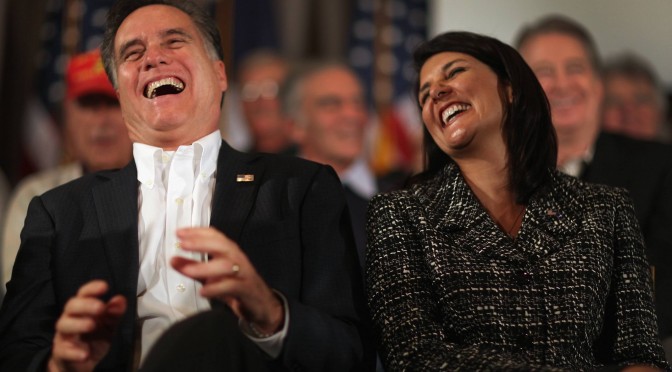Romney’s glaring omission of wind power and other renewables appears to be a product of politics, yet wind energy has garnered widespread bipartisan support. Among the congressional Republicans who have expressed strong support for the PTC are President George W. Bush, who is often credited with jump-starting Texas’ wind industry, and Sen. Chuck Grassley, R-Iowa, who authored the first-ever wind energy PTC legislation.
Republican presidential candidate Mitt Romney has unveiled his official energy plan. Not surprisingly, wind power – and all forms of renewable energy – are conspicuously absent from the former Massachusetts governor’s strategy, which focuses heavily on oil and gas development and expansion.
The foundation of Romney’s energy plan is his goal to achieve energy independence by 2020. Yet wind energy plays a meager – if not non-existent – role in reaching that objective.
“America’s natural resources can be a long-term competitive advantage for American manufacturing, and their development is the key to a reindustrialization of the U.S. economy,” the Romney plan states.
Those “natural resources,” however, primarily include oil and gas, and not wind and solar resources, according to Romney. Among his strategies for achieving the energy-independence goal are increasing oil and gas exploration and development, including approving the Keystone XL pipeline.
“North America is the fastest-growing oil- and gas-producing region in the world,” he says in his plan, failing to mention any of the nation’s abundant wind and solar resources.
Likewise, oil exploration and development was featured prominently in the candidate’s offshore energy plan, which lacked any mention of offshore wind power development.
“Off the Atlantic coast, for instance, billions of barrels of oil await development, and a bipartisan consensus in Virginia supports doing just that,” the plan states. “Unfortunately, the president chose to block access to those resources and cancel leases that had been planned in the area …Opening greater access and streamlining permitting will not only increase production in areas where resources have already been identified, but also speed the identification and development of new resources.”
Romney’s avoidance of offshore wind shouldn’t come as a surprise, however. As governor of Massachusetts, he strongly opposed plans for the Cape Wind project off Nantucket Sound.
Meanwhile, in his energy plan, Romney attacks President Barack Obama for supporting clean energy and blames him for a slowdown in the domestic fossil-fuel markets.
“In the midst of the energy revolution taking place on state and privately held lands across America, oil and gas production on federal lands somehow plummeted last year,” Romney says. “This was no accident. President Obama has intentionally sought to shut down oil, gas and coal production in pursuit of his own alternative energy agenda.”
Romney ruffled more than a few feathers last month, when a spokesperson for his campaign revealed that Romney would let the wind energy production tax credit (PTC) expire.
“[Romney] will allow the wind credit to expire, end the stimulus boondoggles and create a level playing field on which all sources of energy can compete on their merits,” a spokesperson for the Romney campaign told the Des Moines Register in July.
The U.S. wind energy industry is already suffering from the effects of Congress’ failure to extend the PTC. The entire supply chain is reeling, and layoffs are mounting. An estimated 37,000 jobs will be lost if the PTC is not renewed, including many in manufacturing.
In his energy plan, Romney cites these precise job losses as a reason not to pursue domestic wind energy development. He fails, however, to recognize that the mounting layoffs have anything to do with policy.
“[As] companies like Solyndra were going bankrupt and the wind industry was shedding 10,000 jobs, revolutionary innovation in the private sector was paving the way for energy independence and an economic resurgence,” Romney says in his plan.
Rather, he believes manufacturing jobs will be created by the oil and gas supply chains.
“Another 1.1+ million jobs would be generated in the manufacturing sector, notably for machinery, transportation equipment, fabricated metals, paper products and chemicals,” Romney’s energy plan states. “These sectors benefit not only from the overall economic expansion, but also from cheaper energy input costs. The manufacture of petrochemicals, steel and fertilizer is notably intensive in the use of petroleum and/or natural gas, and should benefit disproportionately from the increased output of hydrocarbons.”
In fact, even Karl Rove, former deputy chief of staff and senior adviser to President George W. Bush and a well-known conservative, supports a PTC extension.
The other scant references to renewables in Romney’s plan center around giving states more authority to make permitting and siting decisions, including for projects on federal lands.
“[F]rom oil and gas and coal to wind and solar and biofuels, states are far better able to develop, adopt and enforce regulations based on their unique resources, geology and local concerns,” Romney’s plan states.


